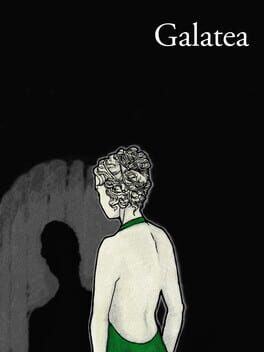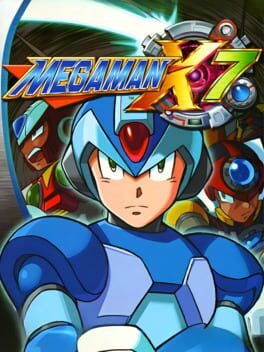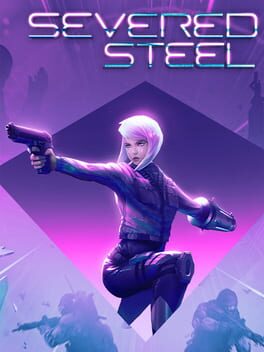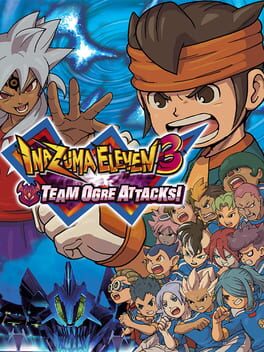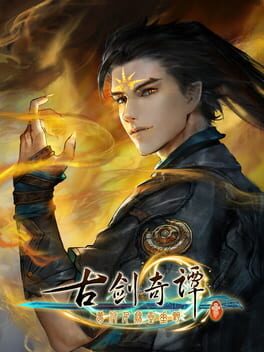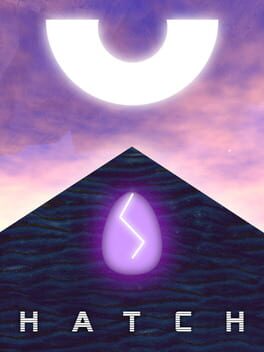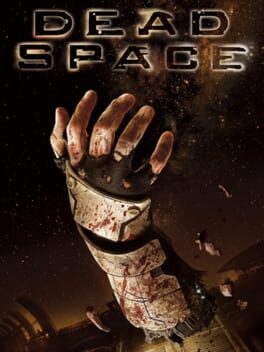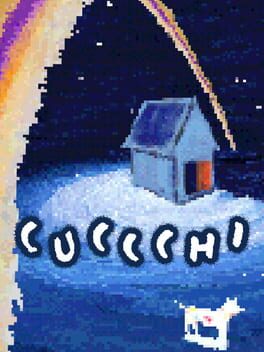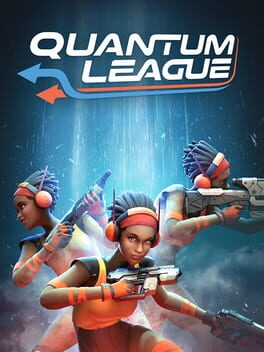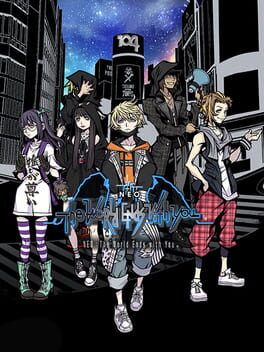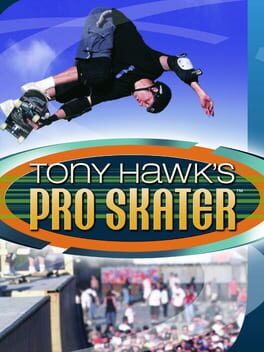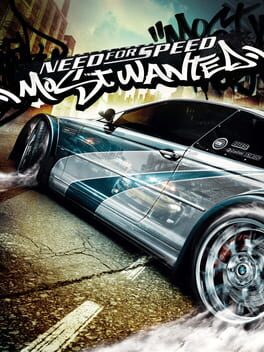rubenmg
2000
To an extent I can appreciate Galatea for its search for an NPC with more presence than usual in videogames in general and in text adventures in particular. If there is one thing I’ll never get tired of is people experimenting with IAs, especially when it is more about trying new models than raw technological power.
And yeah, you never know exactly how Galatea is and the conversations are equally blurred enough to not be able to really move anything exactly in the direction you want. My main concern is in not being able to properly develop any of its themes. In a way I guess having multiple big thematic ideas as well as various dozens of endings going around was just the perfect match for the game, but in my playthroughs none of them got into anything interesting. Probably much of it has to do with a writing that doesn’t stand up enough by itself.
In one of the conversations the main character ended up talking with Galatea about their family, their sister, and crying with her reaching through a connection beyond the cold relation of a visitor and a museum piece. The problem? It got out in a few lines (which can be fine if done well) and honestly didn’t feel to me that neither the main character nor Galatea had any kind of confidence, trust or just feeling between them yet for the talk to end up that way. It makes me wonder if it wouldn’t have been better to reduce all the possible ramifications to have a more focused development, in particular when reaching near the personal areas, probably the most interesting aspects of the dialogues. I know that Emily Short herself has already reckoned that this is no perfect game by any means, especially as more games and years passed by. And in a similar way, I appreciate Galatea in some ways, but the words weren’t enough to make me want to visit again.
And yeah, you never know exactly how Galatea is and the conversations are equally blurred enough to not be able to really move anything exactly in the direction you want. My main concern is in not being able to properly develop any of its themes. In a way I guess having multiple big thematic ideas as well as various dozens of endings going around was just the perfect match for the game, but in my playthroughs none of them got into anything interesting. Probably much of it has to do with a writing that doesn’t stand up enough by itself.
In one of the conversations the main character ended up talking with Galatea about their family, their sister, and crying with her reaching through a connection beyond the cold relation of a visitor and a museum piece. The problem? It got out in a few lines (which can be fine if done well) and honestly didn’t feel to me that neither the main character nor Galatea had any kind of confidence, trust or just feeling between them yet for the talk to end up that way. It makes me wonder if it wouldn’t have been better to reduce all the possible ramifications to have a more focused development, in particular when reaching near the personal areas, probably the most interesting aspects of the dialogues. I know that Emily Short herself has already reckoned that this is no perfect game by any means, especially as more games and years passed by. And in a similar way, I appreciate Galatea in some ways, but the words weren’t enough to make me want to visit again.
Es cuestionable, y con cierta razón, cuál es el aporte real de Igarashi a Castlevania más allá de ideas a alto nivel. Rompo la lanza a favor de que Igarashi sí que mete algo más de mano. Como prueba Circle of the Moon. De los Castlevania Metroidosos que jugué (todos hasta Aria of Sorrow incluido), el único que se interesa en el concepto de darle vueltas al castillo. Donde los de Iga son juegos de convertirte en Goku Super Sayan Dios Ultra Instinto 100% Kaioken hasta que puedas limpiar en tiempo récord cada pantalla del mapa, Circle va remixeando los enemigos de forma que nunca puedes volver atrás por gusto, te vas a encontrar siempre un reto nuevo y a la altura. Incluso todo el asunto RPG de los looteos tiene mucho más peso que conseguir una de las ciento de armas que nunca vas a usar porque tiene peores stats. Porque aquí las mejoras que consigues son nuevas formas de atacar, incluso tienen un simple sistema de combinación que es suficiente para mantenerte probando nuevas tácticas de vez en cuando. Aún con esto, el mejor Castlevania Metroid tampoco consigue que ni la mejor escena de acción supere la sensación de ser un Castlevania clásico muy pasado por agua. De que cuando llegas a un reto que se antepone, la lógica te dice de volver atrás en una aburrida búsqueda de mejoras. Buen intento, lástima que Igarashi no tardó en volver.
2003
The game is very evidently half baked, with a sense of bugginess in every motion and, to top it off, the more gimmicky ideas seem to tell that there wasn’t even a solid concept to work upon. Add a weak intro level and a tiresome story told through unskippable cutscenes that appear again and again, the mixing for failure is done. Perhaps because it is so messy, or out of curiosity of why this one in all the franchise was so poorly received, it is also a Mega Man game that kept me interested up to the very end, which is an achievement.
Sometimes intentionally, some others not, the title ends up building pretty tight fights quite often. On the most probably thought part, the initial two protagonists are a simple yet successful complement to each other, the agility but risky close range offensive of Zero and the safety on the distance but poor tools when cornered of Axl. The levels themselves tend to be quite bad, the best thing I can say about them is that they can be speedrun skipped without issues, which usually is the best way to tackle them. Saying that something is easily avoidable is secretly one of the ugliest insults, but at least it lends space into a boss rush approach.
The 3D is interestingly used in these fights, always slightly touching the camera angle or the arena navigation to modify in turn the perception and dynamics of the action. Again, the bosses are dumb, but in their dumb behaviour there is something that clicks more than it should. There is the fire guy who will circle around while shooting with 2 clones of him, occasionally cross attack through you, at the center of the ambush you’ll also have to deal with a missile launching platform and, to finish off, you are fighting on top of a mech, so it won’t be rare to get some weird momentum mixed in. What is a very simple behavior unexpectedly keeps you moving and reacting in a pace that some action games could only dream of. Boss fights keep maintaining this tension constantly just using simple patterns that build on top of each other and rarely leave room for breath. There’s the water boss who not only doesn’t leave any clear window open to get free hits, the classically boring design where offense and defense are separate things contaminating even the most technically complex hack and slash of your preference, but will keep switching patterns all the time. For some, this is poor design. In my dictionary, this is what you call a proper fight.
A disaster? Kind of. But one that at least tries things and can be unironically enjoyed, much more than the rest of the NFT like produced entries in the series.
Sometimes intentionally, some others not, the title ends up building pretty tight fights quite often. On the most probably thought part, the initial two protagonists are a simple yet successful complement to each other, the agility but risky close range offensive of Zero and the safety on the distance but poor tools when cornered of Axl. The levels themselves tend to be quite bad, the best thing I can say about them is that they can be speedrun skipped without issues, which usually is the best way to tackle them. Saying that something is easily avoidable is secretly one of the ugliest insults, but at least it lends space into a boss rush approach.
The 3D is interestingly used in these fights, always slightly touching the camera angle or the arena navigation to modify in turn the perception and dynamics of the action. Again, the bosses are dumb, but in their dumb behaviour there is something that clicks more than it should. There is the fire guy who will circle around while shooting with 2 clones of him, occasionally cross attack through you, at the center of the ambush you’ll also have to deal with a missile launching platform and, to finish off, you are fighting on top of a mech, so it won’t be rare to get some weird momentum mixed in. What is a very simple behavior unexpectedly keeps you moving and reacting in a pace that some action games could only dream of. Boss fights keep maintaining this tension constantly just using simple patterns that build on top of each other and rarely leave room for breath. There’s the water boss who not only doesn’t leave any clear window open to get free hits, the classically boring design where offense and defense are separate things contaminating even the most technically complex hack and slash of your preference, but will keep switching patterns all the time. For some, this is poor design. In my dictionary, this is what you call a proper fight.
A disaster? Kind of. But one that at least tries things and can be unironically enjoyed, much more than the rest of the NFT like produced entries in the series.
2021
There is always a sensation that you are on the verge of being overwhelmed by the game, but due to how short term the weapons are, the focus on getting close to single objectives helps as a guidance to lead your havoc to. The delicious core mechanics could only carry the game so far, but the fast paced campaign keeps throwing more and more good ideas into the mix (save for some few uninspired levels at the end). Portals, flying enemies that rival your mobility, shielded soldiers that will push you to prove that yes, flipping your character vertically in first person is cool, all you needed was to move the camera manually during bullet time to make it work.
And the environments themselves, how everything is so small to make you feel trapped but at the same time open enough so that 12 guys will shoot you from any direction the second you enter a new room. Really the only thing I’m missing here is that enemies would be more mixed up, the different types are already there after all, if only to ramp up the scenery destruction, the most notable footprint after the battle. But even when the most basic soldiers are a bit too abundant, their AI ensures that they are never a passive obstacle. You never stay still, why would they wait for you then. The only way to escape is to keep moving.
And the environments themselves, how everything is so small to make you feel trapped but at the same time open enough so that 12 guys will shoot you from any direction the second you enter a new room. Really the only thing I’m missing here is that enemies would be more mixed up, the different types are already there after all, if only to ramp up the scenery destruction, the most notable footprint after the battle. But even when the most basic soldiers are a bit too abundant, their AI ensures that they are never a passive obstacle. You never stay still, why would they wait for you then. The only way to escape is to keep moving.
What happened to the charm? Why get rid of the good characters in the final farewell tour if the new ones just get a lame backstory and then take an infinite backseat? The first game had its clear problems with giving everyone a share of the scenario, but the second seemed to get it right by always making sure that the dynamics between characters kept everything together.
Even more wasteful is the idea of the world cup that looks like no one really wanted to work towards. The small regional areas and stories in Inazuma 2 conveyed a stronger sense of a unique place than any of the barely cartoonish (which does not mean charismatic) fake (both in a literal and perceived sense) recreations of each country, that is when they finally decide to “go to other countries” halfway through the game.
Everything just shows that they were tired of this. Axel wants to retire yet again for the same reason as the previous two games, Ray Dark reappears doing the same exact thing as always, Jude has the same trauma, the same mafia plot twist is the cause of everything in the shadows. At some point they say look, let’s say that the grandfather was alive, that way we can kill the myth and the series. And I don’t know about GO games yet, but that ending really looks like a desperate goodbye, hoping that it inspired any fan to do anything else if that meant that they could put this to rest for good.
Even more wasteful is the idea of the world cup that looks like no one really wanted to work towards. The small regional areas and stories in Inazuma 2 conveyed a stronger sense of a unique place than any of the barely cartoonish (which does not mean charismatic) fake (both in a literal and perceived sense) recreations of each country, that is when they finally decide to “go to other countries” halfway through the game.
Everything just shows that they were tired of this. Axel wants to retire yet again for the same reason as the previous two games, Ray Dark reappears doing the same exact thing as always, Jude has the same trauma, the same mafia plot twist is the cause of everything in the shadows. At some point they say look, let’s say that the grandfather was alive, that way we can kill the myth and the series. And I don’t know about GO games yet, but that ending really looks like a desperate goodbye, hoping that it inspired any fan to do anything else if that meant that they could put this to rest for good.
2018
How interesting are the inhabited places. It is very easy to be impressed with the celestial aesthetic of the first city you visit, present both in the habitants clothes and also in the impossible colossal architecture, where air-sustained bridges envelop the monumental buildings with their curves. It is even more impressive that when you go to the human world the villages are even more interesting.
Contrary to some trends in RPGs, you get to know the life of a place not by intruding into other peoples houses, but just by contemplating their lives on the outside. What better occasion to know the customs of a new place than with a street market. A market that isn’t there for you, you can’t “interact” with most of the shops because you don’t need to. There you can see people gathering together doing some errands, some workers a bit farther away in the beautiful process of paint manufacturing, an old man telling riddles to little kids… Looking a bit more into it, it’s not just the people, but how the villages are very intelligently built around water. You have this first village that surrounds the side of a lake or the second one with an aqueduct system that provides a stream of water around all the houses.
But this is a fantasy RPG or something, so the inevitable time of adventure will come sooner or later. Where the villages irradiated charm just by showing how life went on in a natural way, the adventure sections are unable to hide their blatant lies even when they are set in a forest. The repetitive punchless combats, the uninteresting streamlined levels, the puzzles to add “variety”... This is, unfortunately, the focus of the game, what I mentioned before is a complement at most.
Contrary to some trends in RPGs, you get to know the life of a place not by intruding into other peoples houses, but just by contemplating their lives on the outside. What better occasion to know the customs of a new place than with a street market. A market that isn’t there for you, you can’t “interact” with most of the shops because you don’t need to. There you can see people gathering together doing some errands, some workers a bit farther away in the beautiful process of paint manufacturing, an old man telling riddles to little kids… Looking a bit more into it, it’s not just the people, but how the villages are very intelligently built around water. You have this first village that surrounds the side of a lake or the second one with an aqueduct system that provides a stream of water around all the houses.
But this is a fantasy RPG or something, so the inevitable time of adventure will come sooner or later. Where the villages irradiated charm just by showing how life went on in a natural way, the adventure sections are unable to hide their blatant lies even when they are set in a forest. The repetitive punchless combats, the uninteresting streamlined levels, the puzzles to add “variety”... This is, unfortunately, the focus of the game, what I mentioned before is a complement at most.
2019
Upon finishing the game, there is a small reflection where the obstacles you went through are mentioned, implying that this was a somewhat harsh journey, that reaching this place was earned.
It’s quite hard to measure how much a game really wants to push you against the wall, since there will usually be a reasonably obvious way to get through anything (although, it’s very interesting to observe the situations where, for whatever reason, the possibility of completion is gone). Hatch’s resistance falls weak. It’s not only that the way to continue up feels calculated for you to pass through, again, a reasonable conclusion, even if the game didn’t even try to give the illusion of the contrary. Where it falls is in the ignorance of friction and momentum. All the journey is a mere hide and seek of surfaces, when they are hidden, inclined more than 90 degrees.
The only obstacles and their remedies seem to recognize the fundamental problem that is running up any slope always at max speed. The sun like figure is added as a look to avoid in order to not take the easy (geographical) way, making the more open first half feel again constrained, not resistant, looking for the designed angle where you can climb in safety. Falling down, the most evident frustrating experience in climbing, gravity, the ultimate inescapable force, is toned down with a checkpoint system, probably in recognition that repeating the climb, and in consequence the act of climbing, lacked enough substance. “Don’t forget where you came from” says at the end, hard to remember a road where the obstacles are a paved way.
It’s quite hard to measure how much a game really wants to push you against the wall, since there will usually be a reasonably obvious way to get through anything (although, it’s very interesting to observe the situations where, for whatever reason, the possibility of completion is gone). Hatch’s resistance falls weak. It’s not only that the way to continue up feels calculated for you to pass through, again, a reasonable conclusion, even if the game didn’t even try to give the illusion of the contrary. Where it falls is in the ignorance of friction and momentum. All the journey is a mere hide and seek of surfaces, when they are hidden, inclined more than 90 degrees.
The only obstacles and their remedies seem to recognize the fundamental problem that is running up any slope always at max speed. The sun like figure is added as a look to avoid in order to not take the easy (geographical) way, making the more open first half feel again constrained, not resistant, looking for the designed angle where you can climb in safety. Falling down, the most evident frustrating experience in climbing, gravity, the ultimate inescapable force, is toned down with a checkpoint system, probably in recognition that repeating the climb, and in consequence the act of climbing, lacked enough substance. “Don’t forget where you came from” says at the end, hard to remember a road where the obstacles are a paved way.
2008
Space, zombies and little to no resources. Few rooms where the combat takes place can actually be called big and even in those scenarios, doubting if it is better than the usual lack of space when regardless you end up being surrounded by hazards anyway, with only a few of them on view. Having some distance is no small thing considering that the tiny number of enemies who do not rely on melee attacks running towards you on sight are still more lethal in close quarters. Not only is the enemy stronger, but you are weaker, since the shooting focusing on taking off limbs to save ammo is considerably harder to execute when the tentacles are dancing around the whole width and height of the camera.
The already tense combat doesn’t stop there as resources are really scarce to the point where I thought the game was virtually softlocked on normal more than once, no ammo, no health, no cures, no money (it’s hard to illustrate how this happens, let’s just say that, for instance, you get 6 bullets for the main gun with every obtainable pack. And the standard magazine capacity is 10 bullets. It’s the only weapon that I had where I recovered more than half of a default charge with every pack). Apart from adding to the tension, the possibility of running absolutely out of everything being quite high adds a new layer to the space. There are melee possibilities, sure, but due to the enemy design it often leads to a (not recommended) trading of damage, a one way trade in the case your blow is blocked. There is another resource of course, using the kinesis power to pick up and throw anything from the surroundings. And each object has its own properties, making the process more physical and a desperate course of action less likely to be successful. Shape, size, weight, everything is taken into account. A floppy ragdoll corpse is rather useless, but the blades of the zombies cut through everything, clunkier objects can grant you some stagger and even sometimes you can carefully place the bigger items in order to block or guide enemies to your mental trap.
Outside of combat the magnificent ambiance assures that the action and tension are never truly gone. Toned down compartments and corridors filled with vapor covering the view and not being sure what may or may not be in front of you, taking into account the multiple traps found while exploring and that monster noises are the soundtrack of the game. The audio is to be noted to the point when there were some moments where I was using the store and I had to take a turn around just to be sure that I was really safe. And being a good indicator of danger, fake and real, it takes a main role in the no oxygen sections where you can only rely on your eyes (it’s pretty neat the attention given to those sections apart from managing the oxygen, having ammo only for the flamethrower in those sections lead to a pleasant horrible surprise). Mix them with the no gravity sections where everything comes at you at (almost) 360 degrees and get to know a new meaning of disorientation.
The already tense combat doesn’t stop there as resources are really scarce to the point where I thought the game was virtually softlocked on normal more than once, no ammo, no health, no cures, no money (it’s hard to illustrate how this happens, let’s just say that, for instance, you get 6 bullets for the main gun with every obtainable pack. And the standard magazine capacity is 10 bullets. It’s the only weapon that I had where I recovered more than half of a default charge with every pack). Apart from adding to the tension, the possibility of running absolutely out of everything being quite high adds a new layer to the space. There are melee possibilities, sure, but due to the enemy design it often leads to a (not recommended) trading of damage, a one way trade in the case your blow is blocked. There is another resource of course, using the kinesis power to pick up and throw anything from the surroundings. And each object has its own properties, making the process more physical and a desperate course of action less likely to be successful. Shape, size, weight, everything is taken into account. A floppy ragdoll corpse is rather useless, but the blades of the zombies cut through everything, clunkier objects can grant you some stagger and even sometimes you can carefully place the bigger items in order to block or guide enemies to your mental trap.
Outside of combat the magnificent ambiance assures that the action and tension are never truly gone. Toned down compartments and corridors filled with vapor covering the view and not being sure what may or may not be in front of you, taking into account the multiple traps found while exploring and that monster noises are the soundtrack of the game. The audio is to be noted to the point when there were some moments where I was using the store and I had to take a turn around just to be sure that I was really safe. And being a good indicator of danger, fake and real, it takes a main role in the no oxygen sections where you can only rely on your eyes (it’s pretty neat the attention given to those sections apart from managing the oxygen, having ammo only for the flamethrower in those sections lead to a pleasant horrible surprise). Mix them with the no gravity sections where everything comes at you at (almost) 360 degrees and get to know a new meaning of disorientation.
2021
Adapting art, aside from narrative, across different mediums looks impossible due to how difficult it is to translate form. On the other hand, dreams fit well with videogames, both with logic as a supplement in any way imaginable. So how is it to adapt the paintings of a dreamy author? Does it have any value to do that?
The biggest merit of the game is giving a new perspective on an artist and his work. Googling Enzo Cucchi works gives a confusing image. Various paintings randomly ordered appear without much guidance, and it’s a bit hard to dig beyond the surface. But the selective work of Cuccchi gives a deeper interpretation of those works.
Natural and rural life predominate the sceneries and provide vitality through the color they irradiate. Curiously, in contraposition, mechanical appearings seem the antithesis to this. In the most obvious example, the village that is visited some times in the first minutes loses its color at the moment that trains, boats and tanks begin to appear. After that, there is a pattern where everytime we encounter some of this mechanical presence the world will be weirdly monochrome, the colors that before inspired life now suggest death.
With the way the works are presented the fear of a world dying is obvious, and because of that the last level is surprising yet still coherent. After all that we see, we encounter ourselves in a map where plants are uncolored and there is a red swamp with fish dying, following the thematic line. But this last map has the colors surrounding everything like in a fog, less attached from the physical world. The only places where color returns to nature is where humans are present, people wearing straw hats reminiscent of the rural people, just being there. An encapsulated paradise in a way, but a paradise that is dying, a paradise where every person is trapped under a web right above them.
I still think that Julián Palacios should trust more in his own games. The already dreamy power aesthetic of the Windows maze wallpaper is a good canvas to paint Cucchi’s work into. You don’t need eyes to collect or skulls to avoid. But given that this is a minor complaint in a game that can convey such an understanding of a surrealist painter, I can give it a pass.
The biggest merit of the game is giving a new perspective on an artist and his work. Googling Enzo Cucchi works gives a confusing image. Various paintings randomly ordered appear without much guidance, and it’s a bit hard to dig beyond the surface. But the selective work of Cuccchi gives a deeper interpretation of those works.
Natural and rural life predominate the sceneries and provide vitality through the color they irradiate. Curiously, in contraposition, mechanical appearings seem the antithesis to this. In the most obvious example, the village that is visited some times in the first minutes loses its color at the moment that trains, boats and tanks begin to appear. After that, there is a pattern where everytime we encounter some of this mechanical presence the world will be weirdly monochrome, the colors that before inspired life now suggest death.
With the way the works are presented the fear of a world dying is obvious, and because of that the last level is surprising yet still coherent. After all that we see, we encounter ourselves in a map where plants are uncolored and there is a red swamp with fish dying, following the thematic line. But this last map has the colors surrounding everything like in a fog, less attached from the physical world. The only places where color returns to nature is where humans are present, people wearing straw hats reminiscent of the rural people, just being there. An encapsulated paradise in a way, but a paradise that is dying, a paradise where every person is trapped under a web right above them.
I still think that Julián Palacios should trust more in his own games. The already dreamy power aesthetic of the Windows maze wallpaper is a good canvas to paint Cucchi’s work into. You don’t need eyes to collect or skulls to avoid. But given that this is a minor complaint in a game that can convey such an understanding of a surrealist painter, I can give it a pass.
2021
The concept is one of those “wouldn’t be cool if…” that turns out to be… pretty cool! Add some good enough levels and weapons, no need to reinvent the wheel, and that’s everything needed.
Now comes the tragedy of an online game that very few play. At least the game was focused in the 1v1 since the beginning, but to be honest I find the coordination between 2 and their chaotic clones funnier. Anyway, I’m no expert in marketing or anything like that, so I’m sure the decisions taken were better than anything I could’ve come up with, like say the aesthetic very “esports” focused that doesn’t particularly appeal to me, but it’s fine as long as more people come and play.
Then there are some… other decisions. One of the changes that surprised me the most since the first beta was that the draw resolution changed. What was a nice twist on the sudden death, making time resume instead of resetting the loop, tightening the tension as less healings are available and you or your opponent may be left in a compromising state, thinking way ahead on what to do in the due time, now is… still here, but only on rankeds? Don’t know how taking that out and making a boring loop restart that could drag forever makes it more friendly or anything for casual matches.
I think the last big addition are the abilities of the characters that all seem to be very weak. The best thing you could say is that at least it doesn’t change the game too much, but if they keep adding stuff at random in search of a magic click my interest will die quicker than the game itself.
Now comes the tragedy of an online game that very few play. At least the game was focused in the 1v1 since the beginning, but to be honest I find the coordination between 2 and their chaotic clones funnier. Anyway, I’m no expert in marketing or anything like that, so I’m sure the decisions taken were better than anything I could’ve come up with, like say the aesthetic very “esports” focused that doesn’t particularly appeal to me, but it’s fine as long as more people come and play.
Then there are some… other decisions. One of the changes that surprised me the most since the first beta was that the draw resolution changed. What was a nice twist on the sudden death, making time resume instead of resetting the loop, tightening the tension as less healings are available and you or your opponent may be left in a compromising state, thinking way ahead on what to do in the due time, now is… still here, but only on rankeds? Don’t know how taking that out and making a boring loop restart that could drag forever makes it more friendly or anything for casual matches.
I think the last big addition are the abilities of the characters that all seem to be very weak. The best thing you could say is that at least it doesn’t change the game too much, but if they keep adding stuff at random in search of a magic click my interest will die quicker than the game itself.
For the first game to be set in a, at the time, current Shibuya was very important in the style and identity of the game both aesthetically and thematically. It was the story of some teenagers seeing the world they lived in with reality juxtaposed within the reaper game, a way to put an outsider's perspective. This was especially important for the main character, Neku, who started the game feeling isolated from that world and then suddenly the first thing he had to do was to read into everyday people’s mind and find a partner in order to survive. Starting from more superficial and direct elements, like the fashion in every district influencing and being influenced by your presence, getting into other thoughts and trying to guide their thinking in the right way… Neku senses opened. Yes, it was still that Shibuya Scramble where you cross with hundreds of unknown faces everyday, but anyhow still a world where Neku is not insignificant, just a part of everything, hence the original title, as cheesy as it may be: It's a Wonderful World. Even though the game stuck with me at the time, replaying it a few years ago was much colder since apart from the premise it didn't really capture me, but at least I could see and appreciate the intention.
NEO is a late sequel, a sequel that maybe never was needed, a sequel asked for just because if you like a game you must ask for more. NEO fails both at trying to capture both the sensations of the modern world and upon reflecting on the place that was left behind in 2007. The most minimum sense of intention is gone, the reaper game is repeated just because that is what it was about, now everything is about an amplified lack of inspiration that before already destroyed the rhythm of a quite catchy premise. There is nothing.
NEO is a late sequel, a sequel that maybe never was needed, a sequel asked for just because if you like a game you must ask for more. NEO fails both at trying to capture both the sensations of the modern world and upon reflecting on the place that was left behind in 2007. The most minimum sense of intention is gone, the reaper game is repeated just because that is what it was about, now everything is about an amplified lack of inspiration that before already destroyed the rhythm of a quite catchy premise. There is nothing.
Following Castlevania tradition as in: focusing on platforming sections that never work, filling the screen with so many enemies that the game bleeds in lag or having bosses that throw their patterns oblivious of you (Dracula) sucks. Following Castlevania tradition as in following its mythology/iconography: the Belmont who goes to face Dracula and his monsters in his own castle, with the staircase before the final battle or the castle getting destroyed in the horizon at the end, rules just as much as the many reinterpretations of the original Dracula tale itself.
True, this game has some of the Castlevania junk mentioned before, the good idea of the alternative paths is not that good when most of the times the optional routes are kind of bad and the idea of having Maria as a playable character could be a fun joke, but getting unlocked so soon is a risk to ruin a whole playthrough. Fortunately, this reinterpretation of Castlevania manages to stay focused enough on its combat, specifically a combat of distance and space.
Usually Castlevania games fail to maintain a 1 to 1 tension between the player and the various hazards. Either the games are in a moment where everything is easy enough to carelessly press forward or you are trapped in knockback and pattern hells relying more on precision and memory to survive. In Rondo, not few enemies will react to where you are at, try to take up your space or punish you for entering their zone, adapt a block stance, even some of the projectile elements like the medussas are a nice counterpart to your objects. The highlight of this is seen in bosses, where every safe reaction to one of their patterns puts you in a stance where they can throw an attack that is specially vulnerable for you at the moment, a constant reaction of both sides, never standing still, the boss health bar mirroring yours almost makes it look like a fighting game at moments. The best thing is that the climax of these fights could not be other than the boss throwing a last desperate attack when its health is already gone, what a more sincere way to show honor to your opponent than to bid farewell with a last punch?
True, this game has some of the Castlevania junk mentioned before, the good idea of the alternative paths is not that good when most of the times the optional routes are kind of bad and the idea of having Maria as a playable character could be a fun joke, but getting unlocked so soon is a risk to ruin a whole playthrough. Fortunately, this reinterpretation of Castlevania manages to stay focused enough on its combat, specifically a combat of distance and space.
Usually Castlevania games fail to maintain a 1 to 1 tension between the player and the various hazards. Either the games are in a moment where everything is easy enough to carelessly press forward or you are trapped in knockback and pattern hells relying more on precision and memory to survive. In Rondo, not few enemies will react to where you are at, try to take up your space or punish you for entering their zone, adapt a block stance, even some of the projectile elements like the medussas are a nice counterpart to your objects. The highlight of this is seen in bosses, where every safe reaction to one of their patterns puts you in a stance where they can throw an attack that is specially vulnerable for you at the moment, a constant reaction of both sides, never standing still, the boss health bar mirroring yours almost makes it look like a fighting game at moments. The best thing is that the climax of these fights could not be other than the boss throwing a last desperate attack when its health is already gone, what a more sincere way to show honor to your opponent than to bid farewell with a last punch?
The only Tony Hawk that manages to take most of the good parts of skating. The only thing that keeps it away from the 5 stars are the competitions. Why should skaters compete against each other in such artificial spaces? I guess that's the "Pro" part of the title. The game is at its best when it reinterprets the mundane through the eyes of exaggerated skate. It feels liberating taking spaces such as a school or a shopping mall and making them places of self expression.
Most of the interesting qualities of the game were lost already in THPS2. While in the first game objectives were scarce and your reward were VHS tapes, the second game introduces money, both inside the levels as floating dollar bills and by completing objectives. Worse than that, that money is what makes your skater grow, while in the first game the stats just went up naturally as you played. From now on the spaces were not common mundane locations, now the skaters are touring around the world. The worst level in Tony Hawk 2 is the one on the beach where one of your objectives is doing ollies over a bum multiple times (to get money, I remind you). What happened with the game that asked you to destroy police cars instead?
Tony Hawk 3 fixes the fuck up of the money (you still gain abstract points that are money, but at least they are not literal), but keeps the tourist approach and still messes the objectives. Some of the objectives were about impressing other skaters or impressing some girls on bikini inside of a yatch. What happened to self expression? Now we skate to look cool in front of others?
Most of the interesting qualities of the game were lost already in THPS2. While in the first game objectives were scarce and your reward were VHS tapes, the second game introduces money, both inside the levels as floating dollar bills and by completing objectives. Worse than that, that money is what makes your skater grow, while in the first game the stats just went up naturally as you played. From now on the spaces were not common mundane locations, now the skaters are touring around the world. The worst level in Tony Hawk 2 is the one on the beach where one of your objectives is doing ollies over a bum multiple times (to get money, I remind you). What happened with the game that asked you to destroy police cars instead?
Tony Hawk 3 fixes the fuck up of the money (you still gain abstract points that are money, but at least they are not literal), but keeps the tourist approach and still messes the objectives. Some of the objectives were about impressing other skaters or impressing some girls on bikini inside of a yatch. What happened to self expression? Now we skate to look cool in front of others?
The dreamy landscapes lose their magic very soon as the screen fills with collectibles, health refills, keys to open doors, and the worst one, enemies respawning only so you can advance, slaves to what-you-have-to-do... The main characteristic from a gameplay perspective comes in the form of Klonoa’s weapon. His weapon can capture enemies and then throw them around any direction or even use them as a double jump. There’s not much to it and after five minutes the interest in using this mechanic is lost. The game knows it, so in order to keep the idea being used it throws mini-puzzles again and again and again turning what would be a forgettable tool into an unforgettable chore.
The not specially great platformer could be enough to carry on with the overall adventure, but in that regard it fails even more. The biggest miss is that the drama doesn’t hit at all. Is it really that sad that a character that just talked to send Klonoa to do a chore in the whole game dies? Is it to cry if at the end of Super Mario Yoshi said “sorry Mario I messed with your mind so that you would help us, you are not really from this planet you must go”? I think I would care a little bit about anything that happened if the supposed charm wasn’t so careless. One highlight of how mishandled this charming adventure is would be the second boss of the game, where to liberate the mother of a character from the control of the bad ones you have to hit her with another mind-controlled evil guy until both become good again. Between this and killing a mother’s ghost to liberate her in the first Pokemon games this generation’s moms must have kept their guard very up.
The not specially great platformer could be enough to carry on with the overall adventure, but in that regard it fails even more. The biggest miss is that the drama doesn’t hit at all. Is it really that sad that a character that just talked to send Klonoa to do a chore in the whole game dies? Is it to cry if at the end of Super Mario Yoshi said “sorry Mario I messed with your mind so that you would help us, you are not really from this planet you must go”? I think I would care a little bit about anything that happened if the supposed charm wasn’t so careless. One highlight of how mishandled this charming adventure is would be the second boss of the game, where to liberate the mother of a character from the control of the bad ones you have to hit her with another mind-controlled evil guy until both become good again. Between this and killing a mother’s ghost to liberate her in the first Pokemon games this generation’s moms must have kept their guard very up.
The simple but effective progression of upgrading your car in the context of street racing and good driving, years of iterative development reflected in the best sense, are not enough to deal with the stretched out rhythm of the game that keeps adding more and more filler. Thankfully, except for the horrible mode where you are focusing on changing gears, most of the race types are good, at the end of the day filler here means more races. But even then, the cool idea of the scaling rankings in the blacklist loses its edge with so many samey races and you start driving passively.
The element that could have saved the game is already written in the title. The most notable improvement of this entry is in the police chases, and it shows. The otherwise unnecessary open world that even the game tries to ignore comes to sense in the pursuits. Cops won’t let you breathe once you have a high enough bounty, and this many roads open help to give life to the chasings. Sometimes you just need to be tailed by 10 cops on a golf course to understand. And, while being chased by cops and inflicting lethal damage to them is the only trend from 2005 that I miss, the idea doesn’t fully work, as the filler gets in here too.
There is this cool arcady concept where you need to raise your bounty to enter some races as proof of your status. This makes the chase not only a game about escaping but a game where you also have to bait the cops. Not trusting that this could be good enough, the game adds secondary (but obligatory to some degree) objectives, that on later pursuits ruin any of the organic intensity. Now you don’t smash the cops because you want to, but because you have to smash 20 cops to complete an objective. Even some of the milestones are contradictory signaling how uninspired they are, sometimes you need to make the chases shorter than a given time and some other times longer. Messing around with the police but only to get your homework done.
The element that could have saved the game is already written in the title. The most notable improvement of this entry is in the police chases, and it shows. The otherwise unnecessary open world that even the game tries to ignore comes to sense in the pursuits. Cops won’t let you breathe once you have a high enough bounty, and this many roads open help to give life to the chasings. Sometimes you just need to be tailed by 10 cops on a golf course to understand. And, while being chased by cops and inflicting lethal damage to them is the only trend from 2005 that I miss, the idea doesn’t fully work, as the filler gets in here too.
There is this cool arcady concept where you need to raise your bounty to enter some races as proof of your status. This makes the chase not only a game about escaping but a game where you also have to bait the cops. Not trusting that this could be good enough, the game adds secondary (but obligatory to some degree) objectives, that on later pursuits ruin any of the organic intensity. Now you don’t smash the cops because you want to, but because you have to smash 20 cops to complete an objective. Even some of the milestones are contradictory signaling how uninspired they are, sometimes you need to make the chases shorter than a given time and some other times longer. Messing around with the police but only to get your homework done.
